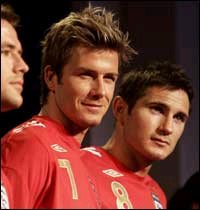Music Reloaded!
 Music has an all new definition now. It’s now time to say goodbye to your bulky CD-players or the MP3 players as Sony Ericsson launches W810i into the market. Sony Ericsson has been an enigma into the world of cell phones over couple of years now. With the introduction of the third walkman phone, it surely has an edge over its competitors now.
Music has an all new definition now. It’s now time to say goodbye to your bulky CD-players or the MP3 players as Sony Ericsson launches W810i into the market. Sony Ericsson has been an enigma into the world of cell phones over couple of years now. With the introduction of the third walkman phone, it surely has an edge over its competitors now. While being similar to the W800, the W810i has benefited from several improvements. Most notably are the improved sound quality, the design which allows the phone to be used by either of the genders, EDGE support for faster wireless data transfers, a slightly enhanced display, and slightly improved battery life.
In addition, the 2 mega pixel camera takes excellent photos and if you need to catch some action, W810i has video too.
The key to Sony Ericsson's success with its Walkman range of music phones is the fact that they've been designed from the inside and out with music in mind.
On the outside, for example, you'll find integrated speakers on the back next to the camera, with a volume control located on the side together with a dedicated play/pause button that will stop the music no matter what the phone's doing.
There's also a D-pad beneath the screen that's specially marked for music features, while on the sides rest matching Walkman and Shortcut buttons for direct access to the W810i's music features.
Inside, there's an MP3 player with MP3 and AAC codec, and a dedicated Walkman application that lets you manage the tunes you're playing. Pressing the Walkman button on the front of the phone will take you straight to this application, where you're presented with the "Now Playing" screen. It's now that the D-Pad comes into play, letting you scroll through the list of tunes you have by pressing up and down or fast forward and rewind the current tune by pressing left and right.
The Walkman application lets you access your whole library of tunes either by track, artist, or playlist that you've created, and play around with the graphic equializer settings. One nice feature is the ability to send playliss and (unprotected) tunes to other users, either via Bluetooth or IR.
As a Walkman phone, the W810i's features are focused mostly on music. This is evident both on the outside of the phone, with dedicated music keys, and the inside, with easy to use playlists and tune down loading software. The sound quality of the W810i is also very high.
Sony has clearly spent time upgrading the W800i with a better build quality and a splash of extra style. It was a relief that the pervious garish orange colours used by Sony Ericsson had been toned down for this model and the cool black with silver accents and a tiny slash of orange is much more acceptable.
The screen is a 1.8 inch 176 x 220 pixel unit which is similar to that on the K750.
The screen does do a good job with bright and vibrant colours and clearly readable text which is about as much as you can ask for from a mid tier mobile, a nice touch is the inclusion of a light sensor that adjust the screen brightness according to the ambient light.  This both lengthens battery life and ensures you can read the screen in all but direct sunlight. It’s use is proven when the backlight timer kicks in and switches it off which sees the screen go jet black, all very cool but there is no way to adjust the backlight timer duration! The keypad is well spaced even for larger fingers and nowhere near as cramped as some Sony phones of the past year, the tactile feedback has also been improved with good feel for the keys as they are slightly raised making it possible to text by feel rather than sight.
This both lengthens battery life and ensures you can read the screen in all but direct sunlight. It’s use is proven when the backlight timer kicks in and switches it off which sees the screen go jet black, all very cool but there is no way to adjust the backlight timer duration! The keypad is well spaced even for larger fingers and nowhere near as cramped as some Sony phones of the past year, the tactile feedback has also been improved with good feel for the keys as they are slightly raised making it possible to text by feel rather than sight.
Round the back of the phone is the customary camera, this one is only a 2 mega pixel version but it provides sharp and useable images, plus it has a built in LED flash which is good for short range shots only.  The camera lacks the inbuilt shutter, which other SE models now sport but this does help keep the package nice and thin, plus I think that users will select this more for its walkman features as opposed the camera.
The camera lacks the inbuilt shutter, which other SE models now sport but this does help keep the package nice and thin, plus I think that users will select this more for its walkman features as opposed the camera.
The Sony Ericsson W810i offers improved music navigation in tandem with the same excellent music management capabilities and decent amount of bundled memory as its predecessor. Out-of-box audio quality is on par with the high standards we’ve come to except from the handset maker, while we’re slightly disappointed by the lack of stereo Bluetooth audio. These niggles aside, the W810i makes for a stellar music phone with side servings of a 2 Megapixel camera and EDGE.
Overall the Sony Ericsson W810i is a good mobile phone that packs some serious muscle when it comes to playing music. It’s not your usual corporate offering and most companies will stick to basic Nokia models or issue Blackberry's.











 HE IS A NICE GUY... SUFFERS FROM DIABETES...
HE IS A NICE GUY... SUFFERS FROM DIABETES...

